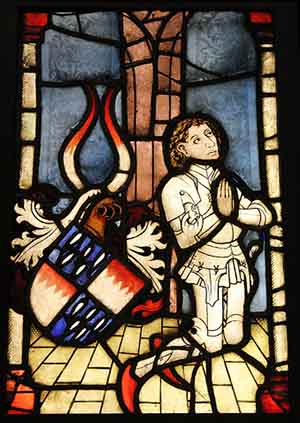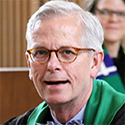By Jeff Brumley
Baptists have historically minimized bodily movement in worship and prayer out of concern for appearing too charismatic or Catholic, scholars and spiritual formation ministers say.
Baptisms and altar calls and the occasional layings-on of hands are accepted, but kneeling and prostrations and the lifting of hands in praise are frowned upon, said Michael Sciretti, minister of spiritual formation at Freemason Street Baptist Church in Norfolk, Va.
“In the typical Baptist church it sounds a little strange to talk too much about the body,” Sciretti said. “Baptists and other Protestants threw all that out during the Reformation.”
And that’s the case despite numerous references in Scripture — both Old and New Testaments — to God’s faithful who worshiped and prayed not only with words but also with physical postures and movement.
Brett Younger remembers noticing the contradiction once in a Baptist worship service.
 “Someone was reading a litany of the Psalms, ‘lift up your hands’ and ‘shout to the Lord,’ and we are reading it in a monotone voice,” said Younger, associate professor of preaching at Mercer University’s McAfee School of Theology. “I’m thinking, we are not doing any of this stuff — and we’re the ones who claim to believe in the Bible.”
“Someone was reading a litany of the Psalms, ‘lift up your hands’ and ‘shout to the Lord,’ and we are reading it in a monotone voice,” said Younger, associate professor of preaching at Mercer University’s McAfee School of Theology. “I’m thinking, we are not doing any of this stuff — and we’re the ones who claim to believe in the Bible.”
But there are signs — generational and liturgical — that suggest those attitudes are gradually changing in Baptist life, Younger and other experts say.
They are seeing a push from younger Christians and even some older ones who want to more fully embrace what it means to worship God and pray. And for many of them, that means using not only the intellect that God gave them, but the body as well.
Kneeling for the Lord’s Supper
One person who sees the spread of physical movement in worship is Kenneth Meyers, faith formation specialist for the Alliance of Baptists.
Using the physical to experience the spiritual is occurring in those churches that are starting to become more liturgical in worship, Meyers said.
It may look, here and there, like processionals, more standing while singing and rising for the reading of the Gospel.
 “Some churches are kneeling for the Lord’s Supper,” he said.
“Some churches are kneeling for the Lord’s Supper,” he said.
The move toward intentional liturgy has invited Baptists to explore ways to more fully engage the body, along with the mind, in worshiping God.
Meyers said the move toward movement isn’t meant as an attack on sitting still during services. On the contrary, physical movement is complemented by stillness.
The idea is to use it all in a balanced way, Meyers said.
“Igniting any and every sensory perception we have is another invitation to engage the Spirit,” he said. “Let’s be open … to all the ways we can experience God.”
‘A complete disconnect’
The use of movement and posture in worship and prayer opens additional channels for engaging the Divine, Sciretti said.
It works that way because God provided people with bodies — which Paul directed Christians to present as living sacrifices.
People also have two other “centers” that can be used in connecting to the Spirit: thinking and feeling. Now the body must be brought back into worship, said Sciretti.
“To be fully human, we need to be up and running in all three of those centers”
Doing so makes one fully present during worship.
 “In worship and prayer, when you’re present, that’s when you can be present to … the Divine presence,” Sciretti said.
“In worship and prayer, when you’re present, that’s when you can be present to … the Divine presence,” Sciretti said.
The Bible offers plenty of examples of this, he added.
There are images of Christ kneeling in the garden and references in the Psalms to ecstatic worship in the Jewish temple.
“How can you read about all this happening in the temple, but you’re reading about it in a very monotone way while sitting down,” Sciretti said. “There’s a complete disconnect.”
Developing spiritual muscles
But there seems to be less of a disconnect among youth, Younger said.
“Young people are not going to put up with sitting and watching,” he said.
Already many have adopted practices atypical to their Baptist upbringings. They are writing confessions on paper and burning them, or having their hands ritually washed after asking for forgiveness. Some are eating grapes along with communion.
 “They recognize they are to be giving their whole” being over to God, Younger said. “That’s happening and that’s going to be really good for the church.”
“They recognize they are to be giving their whole” being over to God, Younger said. “That’s happening and that’s going to be really good for the church.”
Older adults are seeing it, too.
“Communion at the railing is different from sitting in a pew,” he said. “Walking to the front is an act of commitment, while sitting in a pew can be like waiting for a gift without actively participating.”
Those still suspicious that such practices smack of Catholicism or Pentecostalism will continue to miss out, Younger said.
“Some of us are jealous of Pentecostals because we grew up so afraid of that this spiritual muscle will never develop.”
